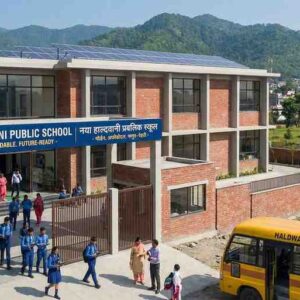New Delhi, India – 2025
The National Education Policy (NEP) 2020 has catalyzed a significant shift in the priorities of the Indian education system, specifically questioning traditional norms such as the necessity of large playgrounds in schools. As the NEP places a greater emphasis on holistic education, digital integration, and innovative teaching methods, the role of extensive physical facilities is being reevaluated. Here’s a closer look at why a big playground may no longer be a top priority for schools under the new policy framework.
Reevaluating the Role of Playgrounds
Traditionally, large playgrounds were seen as vital for schools, associated not just with physical health but also with the social and emotional development of students. While these aspects remain important, the NEP introduces a more nuanced approach to physical education and student well-being, shifting focus in several key areas:
- Holistic Development Beyond Physical Space: The NEP emphasizes the development of cognitive, emotional, and social skills alongside physical fitness. This broader approach advocates for the integration of physical activities that do not necessarily require large playgrounds, such as yoga, dance, and indoor sports, which can be facilitated within smaller, multipurpose areas.
- Innovative Use of Technology: With advancements in technology, physical education is becoming increasingly versatile. Virtual reality (VR) and augmented reality (AR) can simulate extensive physical environments and activities, allowing students to engage in a wide range of physical exercises without the need for large outdoor spaces.
- Community Resource Utilization: The NEP encourages schools to utilize community resources, such as local parks and sports facilities, effectively reducing the need for large on-site playgrounds. This approach not only helps schools with limited space but also fosters a sense of community engagement and resource sharing.
Shift in Physical Education Paradigm
The policy’s new directives suggest a shift from traditional physical education to more modern and inclusive practices:
- Diversified Physical Activities: Schools are encouraged to adopt a variety of physical activities that can be conducted in limited spaces, promoting physical health without the need for large playgrounds.
- Indoor and Outdoor Balance: Emphasizing the balance between indoor and outdoor activities, the NEP supports schools in designing programs that maximize available space and resources, ensuring comprehensive physical education irrespective of playground size.
Academic Focus and Resource Optimization
With the NEP’s heightened focus on academic excellence and skill development, resources are being optimized towards enhancing classroom experiences and pedagogical methods:
- Resource Allocation: By reducing the emphasis on expansive playgrounds, schools can reallocate resources to improve academic facilities, invest in digital technology, and enhance teacher training programs.
- Space Optimization: Urban schools, often constrained by space, can use this shift to their advantage by repurposing areas typically designated for large playgrounds into additional learning centers or technology hubs.
Global and Future-Oriented Education
The NEP aligns Indian education with global standards, where the focus is increasingly on producing graduates who are not only physically healthy but also equipped with the skills needed for a digital and globalized economy:
- Skill-Based Education: The shift towards teaching 21st-century skills, including digital literacy, critical thinking, and collaborative skills, often takes precedence over traditional physical education facilities.
- Preparing for a Digital Future: As digital fluency becomes increasingly important, the NEP prioritizes investments in digital infrastructure and learning tools over traditional physical spaces like playgrounds.
Conclusion
While big playgrounds have their benefits, the NEP’s redefined priorities suggest that they are no longer the cornerstone of a school’s quality. By fostering an education system that values holistic development, leverages technology, and utilizes community resources, the NEP is setting a new standard for what it means to provide a comprehensive and modern education. Schools are now tasked with adapting to these changes, ensuring that they provide a balanced and forward-thinking education that prepares students for the challenges of tomorrow.













